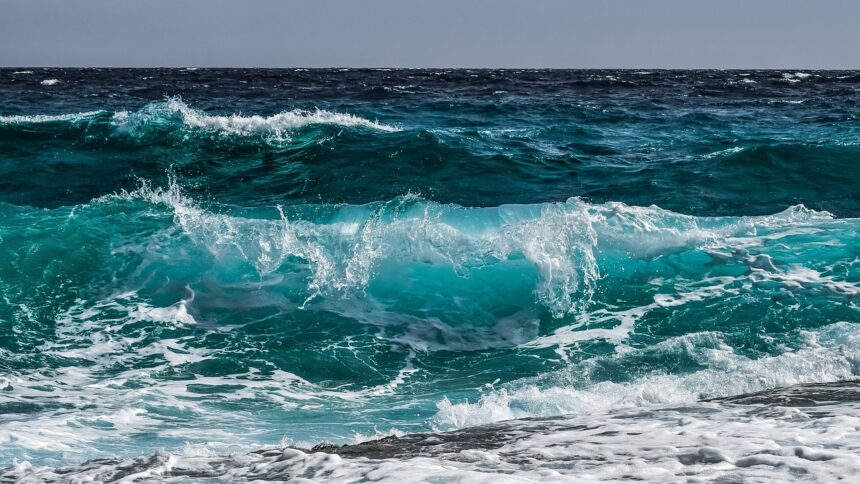Photo by dimitrisvetsikas1969 on Pixabay
Covering approximately 71% of Earth’s surface, the ocean is a vast and largely unexplored entity teeming with life and mysteries that continue to captivate and confound us. The ocean is not just a single, monolithic body of water, but a collection of interconnected and diverse ecosystems that play a crucial role in our planet’s climate, weather, and biodiversity.
A World Beneath the Waves
The ocean is the largest habitat on our planet, accounting for more than 97% of Earth’s water. It is divided into five major basins: the Pacific, Atlantic, Indian, Arctic, and the newly recognized Southern Ocean. Each of these oceanic regions is unique, with its own distinctive characteristics, species, and geographical features.
The Pacific Ocean
Encompassing more than half of the Earth’s water, the Pacific Ocean is the largest and deepest of the five oceans. It derives its name from the Latin “Tepre Pacificum,” which translates to “peaceful sea.” This vast oceanic expanse is home to a diverse array of marine life and contains some of the most fascinating underwater geological features, such as towering underwater mountain ranges and deep ocean trenches.
The Atlantic Ocean
The Atlantic Ocean, although smaller and shallower than the Pacific, is no less intriguing. Much of its seafloor is composed of extended continental shelves, giving it a relatively shallow average depth compared to its Pacific counterpart. The Atlantic Ocean is also home to the world’s longest mountain range, the Mid-Oceanic Ridge.
The Indian Ocean
The Indian Ocean, the third-largest ocean, is known for its warm waters. It is an integral part of the global climate system, with its warm water currents contributing to weather patterns around the world. Despite being smaller than the Pacific and Atlantic, the Indian Ocean is teeming with biodiversity and is critical to the livelihood of millions of people who rely on it for food and commerce.
The Arctic and Southern Oceans
The Arctic Ocean, the smallest and shallowest of the five, is unique for its ice-covered surface and its collection of unique cold-adapted species. On the other hand, the Southern Ocean, recognized officially in 2021 by National Geographic, encircles Antarctica and plays a crucial role in global climate regulation due to its cold currents.
Navigating the Uncharted Depths
Despite the vastness of the oceans, our knowledge about them remains remarkably limited. It is estimated that more than 80% of the ocean remains unexplored and unmapped. The enormity and depth of the ocean create challenges for exploration, but advances in technology are gradually allowing us to probe deeper and uncover more of the ocean’s secrets.
The Importance of Seafloor Mapping
Exploring the ocean begins with mapping the seafloor. High-resolution mapping technologies like multibeam sonar systems provide detailed images of the seafloor, revealing underwater mountains, trenches, and other geological features. These maps guide researchers in deciding where to deploy submersibles and other exploration tools.
The Wonders Yet to be Discovered
The unexplored parts of the ocean hold potential for numerous scientific discoveries. Scientists estimate that there could be hundreds of thousands to millions of undiscovered species in the ocean. Uncharted underwater ecosystems, ancient shipwrecks, and other potential discoveries await in the unexplored depths of the ocean.
A Chemical Cocktail: The Composition of Ocean Water
The ocean is not merely a body of water; it’s a complex mix of different chemicals. Seawater’s weight is about 3.5% dissolved salt, making the ocean a saltwater environment. In addition to salt, oceans are rich in other elements such as chlorine, magnesium, and calcium. This unique chemical composition supports a diverse array of life forms and plays a vital role in Earth’s climate and weather patterns.
The Lifeblood of the Planet: The Ocean’s Role in Climate
The ocean plays a central role in regulating Earth’s climate. It absorbs heat from the sun, distributing it around the world via ocean currents. This “conveyor belt” of heat influences global weather patterns and helps regulate land temperatures. But the ocean’s role in climate extends beyond heat distribution. It is also a significant carbon sink, absorbing large amounts of carbon dioxide from the atmosphere, which has critical implications for global warming and climate change.
A Delicate Balance: The Threats Facing Our Oceans
Despite their size and resilience, our oceans are under siege from a variety of threats. Overfishing, pollution, and climate change pose significant challenges to the health and sustainability of our oceans. Rising sea temperatures, ocean acidification, and other climate-related changes are disrupting marine ecosystems and threatening biodiversity. As we uncover more about our oceans, we also recognize the urgent need for conservation and sustainable practices to protect these vital ecosystems.
The Future of Ocean Exploration
The vast, unexplored expanse of the ocean represents one of the last frontiers on Earth. As our technology improves, so too does our ability to explore and understand the ocean’s depths. The future of ocean exploration is bright, filled with potential for new discoveries, insights, and solutions to the challenges facing our oceans. As we learn more about this incredible habitat, we gain not only knowledge but also an appreciation for the intricate and delicate balance of life beneath the waves.
In the end, our exploration of the ocean is not just about uncovering the unknown. It’s about understanding our planet, our climate, and ourselves. The ocean, in its vastness and complexity, reminds us of our place in the world and our responsibility to protect it. As we continue to delve into the depths, we can only imagine what discoveries await us in the uncharted waters of our blue planet.


